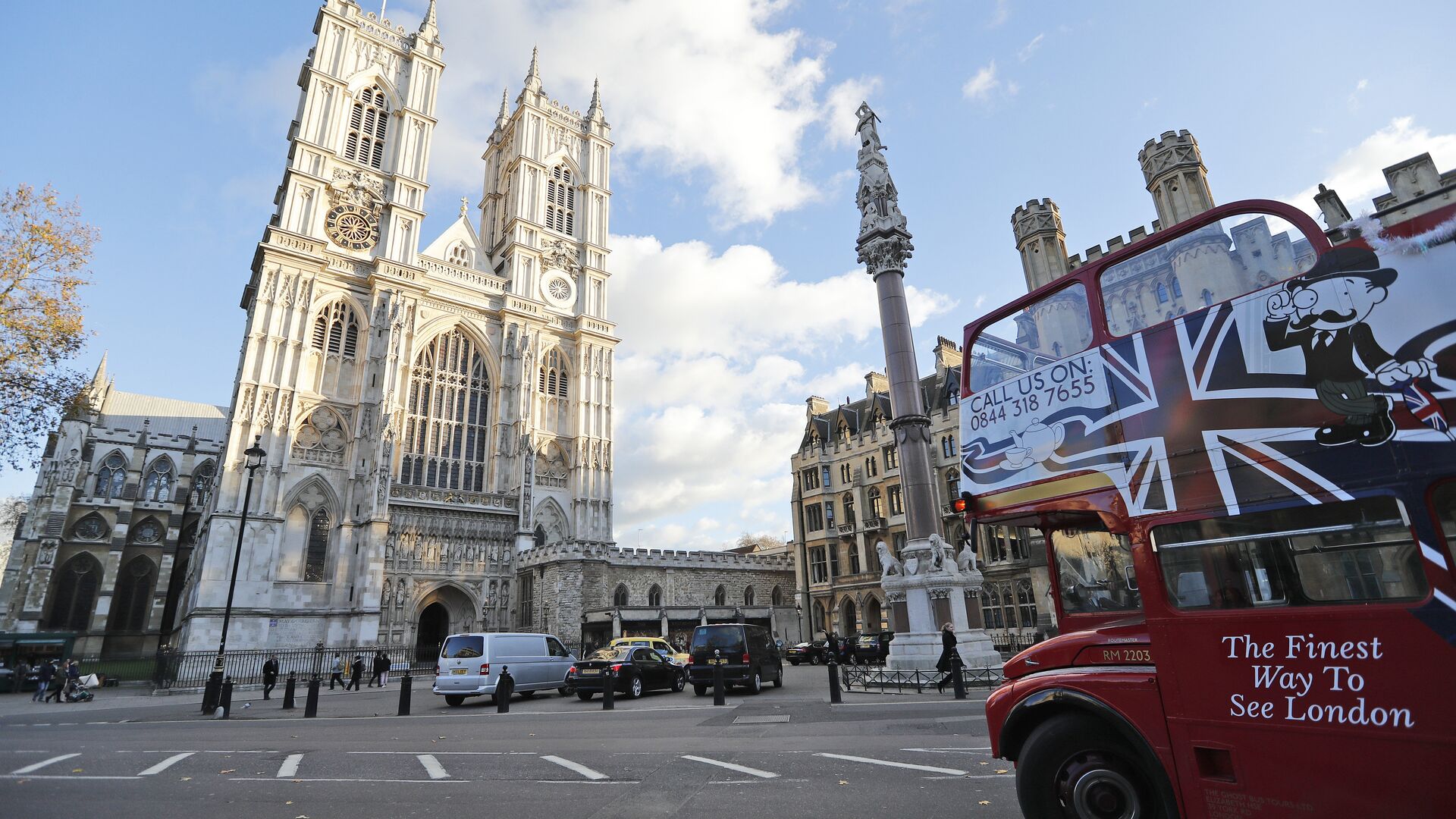https://sputnikglobe.com/20221201/obscure-history-of-long-gone-westminster-abbey-royal-chapel-laid-bare-in-new-study-1104944944.html
Obscure History of Long-Gone Westminster Abbey Royal Chapel Laid Bare in New Study
Obscure History of Long-Gone Westminster Abbey Royal Chapel Laid Bare in New Study
Sputnik International
The chapel, which only existed for a couple of decades before being demolished, receives only "passing mention in abbey histories". Some elements of this... 01.12.2022, Sputnik International
2022-12-01T17:30+0000
2022-12-01T17:30+0000
2022-12-01T17:30+0000
science & tech
westminster abbey
saint
study
https://cdn1.img.sputnikglobe.com/img/106332/52/1063325282_0:229:5322:3223_1920x0_80_0_0_3016d600502ac0fc133eb6c7dea4755e.jpg
Research conducted by scholars in the United Kingdom has shed light on the history of a long-gone chapel that was once part of the famous Westminster Abbey.Dedicated to St. Erasmus of Formia, the chapel was constructed in the 1470s at the behest of Queen Consort Elizabeth Woodville, wife of King Edward IV, and was demolished in 1502 in order to clear space for the building of the new version of the Lady Chapel.“Very little attention has been paid to this short-lived chapel,” explained Westminster Abbey archivist Matthew Payne and English historian and author John Goodall, authors of the new study published in the Journal of the British Archaeological Association on November 30.The royal chapel’s dedication to St. Erasmus, patron saint of mariners, may reflect King Edward’s and Queen Elizabeth’s thanks for the monarch’s “safe passage over the sea in 1471” or perhaps for the health of their children, as one of the feats attributed to the saint was him resurrecting “the child of a gentleman”, the study noted.Payne and Goodall also suggest that the chapel’s dedication reflects the “new and rapidly growing devotion” to the cult of St. Erasmus in England in the 15th century.The scholars also argued that the presence of a statue of St. Erasmus at the Lady Chapel may be “a nod” towards the St. Erasmus chapel that once stood in nearly the same spot.
https://sputnikglobe.com/20211210/possible-first-and-only-evidence-of-crucifixion-in-britain-found-by-archaeologists-1091424656.html
Sputnik International
feedback@sputniknews.com
+74956456601
MIA „Rossiya Segodnya“
2022
Sputnik International
feedback@sputniknews.com
+74956456601
MIA „Rossiya Segodnya“
News
en_EN
Sputnik International
feedback@sputniknews.com
+74956456601
MIA „Rossiya Segodnya“
Sputnik International
feedback@sputniknews.com
+74956456601
MIA „Rossiya Segodnya“
science & tech, westminster abbey, saint, study
science & tech, westminster abbey, saint, study
Obscure History of Long-Gone Westminster Abbey Royal Chapel Laid Bare in New Study
The chapel, which only existed for a couple of decades before being demolished, receives only "passing mention in abbey histories". Some elements of this chapel apparently survived until today.
Research conducted by scholars in the United Kingdom has shed light on the history of a long-gone chapel that was once part of the famous Westminster Abbey.
Dedicated to St. Erasmus of Formia, the chapel was constructed in the 1470s at the behest of Queen Consort Elizabeth Woodville, wife of King Edward IV, and was demolished in 1502 in order to clear space for the building of the new version of the Lady Chapel.
“Very little attention has been paid to this short-lived chapel,” explained Westminster Abbey archivist Matthew Payne and English historian and author John Goodall, authors of the new study published in the Journal of the British Archaeological Association on November 30.
“It receives only passing mention in abbey histories, despite the survival of elements of the reredos, apparently rescued by Abbot Islip in 1502–03 and repositioned above the entrance to another little (royal) chapel, that of Our Lady of the Pew off the north ambulatory of the main church,” the scholars add. “The quality of workmanship on this survival suggests that investigation of the original chapel is long overdue.”
The royal chapel’s dedication to St. Erasmus, patron saint of mariners, may reflect King Edward’s and Queen Elizabeth’s thanks for the monarch’s “safe passage over the sea in 1471” or perhaps for the health of their children, as one of the feats attributed to the saint was him resurrecting “the child of a gentleman”, the study noted.

10 December 2021, 18:58 GMT
Payne and Goodall also suggest that the chapel’s dedication reflects the “new and rapidly growing devotion” to the cult of St. Erasmus in England in the 15th century.
“In the second half of the 15th century his cult became very popular throughout southern England, with significant altars and images dedicated to him at Faversham in Kent, in All Saints, High Wycombe, in St John’s, Glastonbury and elsewhere, and numerous depictions of his story appearing on wall paintings and alabasters,” they wrote.
The scholars also argued that the presence of a statue of St. Erasmus at the Lady Chapel may be “a nod” towards the St. Erasmus chapel that once stood in nearly the same spot.


